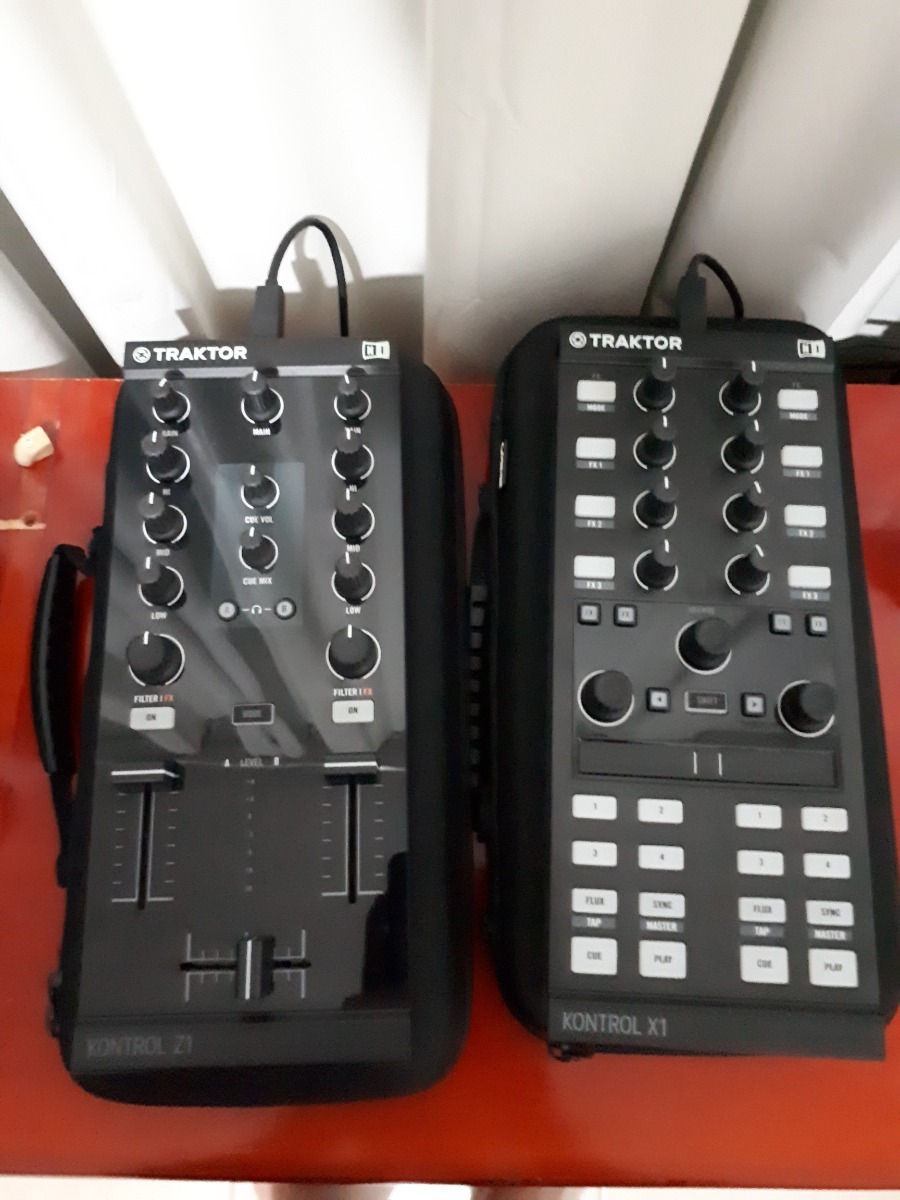

If you are using cuepoints however, this function can be somewhat unnecessary, although it may be utilised as a way to ‘ pre-listen‘ to the track, as unlike the S4, the X1 doesn’t have the pre-listen function. When the deck is stopped the strip will act as a needle drop or a seek function, allowing you to quickly scroll to a point in the track. The touchstrip is multifunctional and is split into two sides left for deck A and right for deck B. If NI are moving away from jog wheels yet want to keep some kind of ‘DJ feel’, then the touchstip might be the way to go. Possibly using ideas from the Pioneer CDJ’s or the Numark controllers, the touchstrip I feel is a step in the right direction. Something they have not integrated into any controller until now. TouchstripĪside from sounding like a more intimate form of striptease, the touchstrip is the biggest change here for NI.
#Traktor kontrol x1 mk2 manual manual#
You can use the loop encoders to set auto or manual loops, but NI appear to have, once again, omitted the snap and quantize buttons from the Traktor X1 mk2 a feature I find extremely useful on the Kontrol S4. However, you are also able to use this function to change the key of the track, an excellent addition. This display can be toggled to show the tracks’ Key a function I find more involved and cumbersome than simply looking at the screen. The Loop encoders still work the same, but with the added luxury of a digital display for the loop length. Losing the 2 browse encoders means Native Instruments has moved the function of ‘ seeking ‘, to the loop encoders, or the new touchstrip ( see below). The browse encoder is now touch sensitive, allowing you to enter browse mode by simply touching the browse encoder. Two browse encoders have now become one, with the addition of load buttons on either-side, one for each deck. This is where the Traktor X1 mk 2 has received the biggest facelift. This button move might cause some of you big issues when you think you’re playing your old X1 and reach for the sync button, only to stop the track midway through! Something you really need to train into your muscle memory before you play out. The dedicated sync button has moved one level up, being replaced by a larger Play Button, which you will notice has moved over to the right to allow for a ‘ Cue‘ button in it’s place. This move however, has made way for a Flux button, enabling you to toggle flux mode on and off. I could see this hindering some DJ’s work flow. But if you want to access hotcues 5 – 8, you’ll need to press the shift key. You have direct access to hotcues 1 to 4, which now have colour coded feedback indicating if they are a loop or a standard cue, load or fade marker. The physical layout remains the same, but the functions have changed somewhat. Making it very easy to set your favourite 6 effects up 3 on each effect unit. Instead of having pre-programmed effects, you can set them up to be what you chose. It’s the exact same functions, buttons and control, except a few minor tweaks in the shift functions of each button. The Traktor X1 Mk 2 is still used to control 2 track decks, 2 effects units, loops, cue points and browse functions. The main concept stays the same, it’s the same casing, the same layout and ultimately provides you with the same essential functions. Lets take a look at what they have added and removed from the Mk1 to create the Traktor X1 Mk2. In this case, Native Instruments have updated the Traktor X1 to the Traktor X1 mk 2.


Then someone comes along and offers an alternative. You develop a technique that may be unique to you, or at least with some form of familiarity. You all control your DJ equipment in different ways manipulating your music using a myriad of differing movements across customizable buttons and knobs. With vast amounts of technology available to you, you must develop your own unique style and workflow. But does the Traktor X1 Mk2 change things enough, or too much, to buy one?
#Traktor kontrol x1 mk2 manual update#
Three years on they have released an update to what I would deem the best controller they have made. It was February 2010 when Native Instruments released their first X1 DJ Controller.


 0 kommentar(er)
0 kommentar(er)
